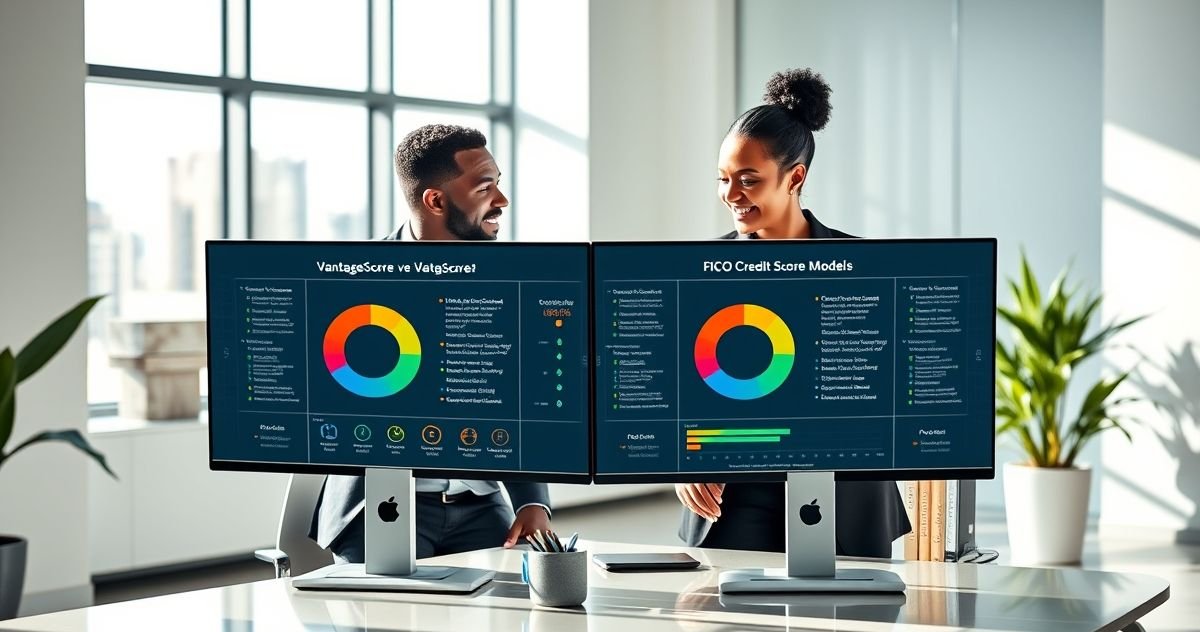Credit scores play a vital role in financial decisions, affecting how lenders, landlords, and even employers evaluate your credit risk. In the U.S., the two dominant credit scoring models are FICO and VantageScore. While they both measure your creditworthiness based on your credit reports, they use different methods, score ranges, and data analysis techniques.
Background
The FICO score, developed by Fair Isaac Corporation since the late 1950s, has long been the industry standard for credit scoring. Most lenders—especially for mortgages, auto loans, and credit cards—rely primarily on FICO scores. In contrast, VantageScore was launched in 2006 as a collaboration between the three major credit bureaus (Equifax, Experian, and TransUnion) to offer an alternative scoring system. Though initially less widely used, VantageScore has gained traction among newer lenders and alternative credit providers.
How FICO and VantageScore Work
Both models generate a three-digit score (generally ranging from 300 to 850) that represents creditworthiness and helps predict the likelihood of timely loan repayment. While the main categories they evaluate are similar, their weighting and approach differ.
Key Factors Considered:
- Payment History: The most influential factor for both models. Timely payments boost scores; missed or late payments, defaults, and bankruptcies severely hurt scores.
- Credit Utilization: This is the percentage of your available credit you’re using. Scores improve when this stays below 30%.
- Length of Credit History: Longer, well-managed credit history positively impacts scores.
- Credit Mix: Having a variety of credit types (credit cards, loans) can be beneficial but has a smaller influence than payment history and utilization.
- New Credit: Recently opened accounts or multiple inquiries can lower scores temporarily.
FICO Score Details
The most common FICO scoring model used is FICO Score 8. It typically ranges from 300 to 850.
Approximate factor weights:
- Payment History: 35%
- Amounts Owed/Credit Utilization: 30%
- Length of Credit History: 15%
- Credit Mix: 10%
- New Credit: 10%
FICO considers unpaid collections accounts negatively and includes some trend data but less extensively than VantageScore 4.0.
VantageScore Details
The latest version, VantageScore 4.0, also scores from 300 to 850 and introduces some modern features:
- Uses trended data, assessing how your credit behavior has changed over time.
- May ignore paid or old collection accounts, making it slightly more lenient.
- Requires a shorter credit history (at least one account open in the past 24 months) compared to FICO.
While VantageScore doesn’t publicly disclose exact weights, its main influences align closely with FICO: payment history, utilization, credit age, and mix.
Real-World Implications
Consider two applicants: Sarah with a FICO score of 720 applying for a car loan, and John with a VantageScore of 710 applying for a credit card. Even though their scores are similar, lenders might interpret these scores differently based on their preferred models and criteria.
Who Uses These Scores?
- Consumers: Individuals with credit history will have scores influencing their access to credit and loan terms.
- Lenders: Banks, credit unions, mortgage companies, auto lenders, and credit card issuers use these scores to evaluate risk.
- Others: Some landlords, employers, and insurance companies also use scores derived from these models for decision-making.
Tips to Manage Your Credit Score Effectively
- Monitor Both Scores: Many credit monitoring services provide access to one or both scores. Regular checking helps catch discrepancies.
- Prioritize Payment History and Credit Utilization: Paying bills on time and keeping balances low improve both scores.
- Know the Model Your Lender Uses: For example, mortgage lenders mostly use specific FICO versions. This knowledge can guide your credit management strategy.
- Dispute Errors Promptly: Mistakes on your credit reports can drag down your scores. Review your reports from Equifax, Experian, and TransUnion regularly and dispute inaccuracies.
- Be Patient and Consistent: Building and maintaining good credit takes time and steady responsible behavior.
Comparison Table
| Feature | FICO Score | VantageScore |
|---|---|---|
| Developer | Fair Isaac Corporation | Equifax, Experian, TransUnion |
| Score Range | 300–850 | 300–850 |
| Common Versions | FICO Score 8, Industry-specific | VantageScore 3.0, 4.0 |
| Payment History Weight | ~35% | Extremely Influential |
| Credit Utilization Weight | ~30% | Highly Influential |
| Credit History Requirement | At least 6 months active history | At least 1 month, with recent activity |
| Use of Trended Data | Limited (some newer versions) | Yes (VantageScore 4.0) |
| Treatment of Collections | Negative unless paid/resolved | May ignore paid or old collections |
| Adoption Rate | Widely used by most lenders | Growing adoption, especially among newer lenders and alternative credit sources |
Common Misconceptions
- Many assume their FICO score is their only credit score, but lenders may consider different models.
- Credit scores from free services often differ from the ones lenders use, as they may use older or alternate models.
- Ignoring small collection accounts can still affect your score under both scoring systems.
FAQs
Q: Will my FICO and VantageScore always match?
A: No, they use different formulas and data considerations, so scores can vary.
Q: Which score do mortgage lenders use?
A: Typically specific FICO score versions like FICO 2, 4, and 5 are standard in mortgage lending.
Q: Which score is better?
A: Neither is inherently better; it depends on the lender’s preference and your credit profile.
Q: How often do scores update?
A: Scores update as new information is reported to credit bureaus, typically monthly.
For more on credit scores, see Credit Score Basics and Dealing with Collection Accounts.
Sources
- Consumer Financial Protection Bureau (CFPB): credit reports and scores
- MyFICO: What’s in Your Credit Score
- VantageScore Solutions: vantagescore.com
- NerdWallet: VantageScore vs. FICO



